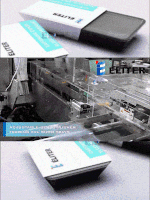Markem-Imaje laser and CIJ technologies offer beverage manufacturers variety and flexibility
2023-12-13
Beverage manufacturers are well aware of the importance of complying with major regulations by using safe, legible and durable packaging codes. As with any other equipment, there are two costs to consider: the initial capital investment (CAPEX) and the ongoing expenses incurred when using the equipment to code the products (OPEX). There are two possible coding technologies: continuous inkjet (CIJ), which offers maximum flexibility and excellent durability; and the laser, which offers the most durable and precise coding available.
Although CIJ technology requires a lower initial investment than laser, each will be suitable for different cases. This is a decision that is usually more complex and must be analyzed based on each application. Let’s look at some examples.
Laser coding: a versatile and effective technology with various applications
Laser coding, considered an attractive option in terms of operating expenses, is the ideal option for applications where marking permanence and environmental impact are essential. Given the variety of laser types and characteristics that exist, the choice of solution will be determined by the desired application.
Due to the continued proliferation of counterfeits, beverage companies need a permanent solution that cannot be erased. Despite the initial investment required by a laser printer, its advantages offset this expense. While CIJ technology offers a high degree of adhesion and permanence, laser is a permanent and reliable solution for most beverage containers.
In fact, although a laser printer generally has a higher price than a CIJ printer, this greater initial investment is recovered over time because, apart from the air filters, no consumables are used. By being ink-free, options like Markem-Imaje’s SmartLase C600 and F250 laser engravers reduce operating expenses and produce permanent codes that won’t fade or erase over time. Additionally, laser has a lower environmental impact, as there are no empty ink cartridges to throw away and fewer volatile organic compounds (VOCs) are released into the environment during the printing process.
CIJ: a proven, proven, high-performance technology with a wide range of applications
CIJ encoding is considered an ideal option when you seek to minimize initial investment and require high speeds, flexibility and excellent code visibility. To adjust to changing environmental priorities, beverage producers are increasingly turning to the use of returnable bottles, cans and refillable pouches. CIJ coding offers the right level of adhesion, to ensure that drinks reach the consumer safely, as well as allowing the marking to be erased through washing processes during recycling. Recycling is also beneficial for business profitability, as companies do not have to face the cost of new containers when using existing ones.
For dark packaging, for example for products like craft beers, a high contrast code is best. Laser may be an option if it is used on the label and if the size and shape of the bottle and label are always the same. On the other hand, if a craft beer producer decides to vary their labels or the shape of their packaging, which is often the case with different flavors or marketing designs, the code is most commonly applied to the bottle, so CIJ is the most appropriate contrast technology, thanks to the use of pigmented inks.
The initial Capex/Opex approach may be affected by this type of application, as a pigmented CIJ model capable of handling pigmented inks is required. These models typically have a higher CAPEX than a CIJ coder using dye inks, as they require a stirring mechanism to prevent the pigment from settling. This is something to keep in mind when making that decision. On the other hand, while there are several models of specific pigments on the market at a higher price, Markem-Imaje offers several models of “hybrid” ink circuits new to the market (9750+, 9750 Expert+) that can reduce the investment general when a mixed fleet of dyes AND pigments is needed. This is especially interesting when a company prefers to streamline its coding activities, costs and resources using a single model.
Unlike lasers, CIJ technology requires consumables, but not all consumables are created equal. Ongoing costs may vary depending on the ink chosen and the level of consumption. For example, when combined with Consumables Saving Mode (CSM), Markem-Imaje’s MEK-free ink offering can reduce consumables consumption, VOC emissions and waste by more than 60%. This is another variable to consider for each application in terms of overall operating costs.
Laser or CIJ: There is no technology better than the other, both offer professional results
Choosing the right coding solution for each case goes far beyond a simple CAPEX/OPEX approach. Additionally, it is not only influenced by encoding speed, print visibility and contrast, and environmental, social, and governance (ESG) issues, but also by application type, speed, brand, and shape and size of the product. For beverage manufacturers to strike the critical balance between cost and print quality, they must first understand all the options on the market.
As traceability experts, Markem-Imaje can help beverage producers choose the most suitable traceability solution for their specific needs.




